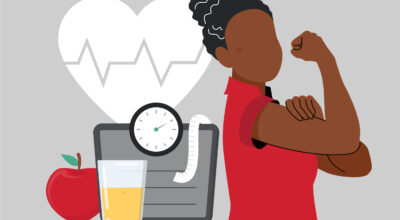How to combat back, shoulder and knee pain as a truck driver

While it may seem that your biggest risk of being injured as a truck driver is getting into an accident, it’s not uncommon to experience some level of pain in your back, shoulders and knees without ever being in a collision. What causes each type of pain and, more importantly, how can you help ease it?
Back pain
One study found that 59% of truck drivers have pain in the lower back. The one factor that appeared to contribute most to pain in this area of the body was spending longer days behind the steering wheel.
If you notice that your back hurts after driving truck all day, start by taking a look at your posture. Ideally, your back should be straight while driving versus slouching forward. Work to keep your shoulders against the back of the seat and your elbows closer to your sides as opposed to holding them out.
It may also be helpful to adjust your seat to a healthier position. This involves reclining the back of the seat slightly and moving the base far enough forward so you don’t have to stretch to reach the pedals.
If your truck’s seat has lumbar support, adjust it so that it provides some tension on your lower spine. There are also lumbar support pillows you can purchase if your seat doesn’t offer this option.
You can also help ease back pain as a truck driver by doing a few stretches throughout the day, such as when you stop for lunch or while loading or unloading.
One to try is to grab one knee and pull it up to your chest, then do the same on the other side. You should feel a stretch in your lower back.
Shoulder pain
Shoulder pain can occur while driving truck mainly due to the repetitive movements related to the job. This can include actions you take while climbing into or out of your cab, tarping and more.
Shoulder pain can also be caused by the amount of tension you must keep on the steering wheel to keep the truck from drifting, especially during inclement weather. This continued force and tension can make your shoulder really ache by the end of the day.
To help keep shoulder pain at bay, take the time to regularly relax your shoulder muscles. Do shoulder rolls or shoulder shrugs a few times every hour to get your shoulders to release.
When stopped at a traffic light, use this time to gently pull one arm across the front of your body. Do the other arm at the next light. This helps to give your shoulder muscles a much-needed break.
Knee pain
The joints in your knees are also at risk of hurting as a truck driver and the cause is often either sitting for long periods of time or the impact from jumping out of your cab, which is sometimes referred to as jumper’s knee.
If your knee pain is caused by sitting for long periods, adjusting your seat differently may help. Some health experts recommend that the knees be bent at 90 degrees while driving; others suggest more of a 20-degree bend. Play around with different positions to see which one feels best for you.
If the pain is a result of jumping out of the cab, try to lessen the impact by landing with softened knees. In other words, don’t lock your knees when you land. Instead, keep them slightly bent to help absorb the impact.
Walking around for a few minutes each time you stop may also help ease your driving-related knee pain. If your pain is more bothersome, you may even consider wearing a knee brace to better support this lower body joint.
Driving truck doesn’t have to equal pain. Paying attention to your posture, adjusting your seat and doing stretches throughout the day are all good ways to help prevent and ease these truck-driving discomforts.
Want more lifestyle tips? Check out our content library for drivers here.


